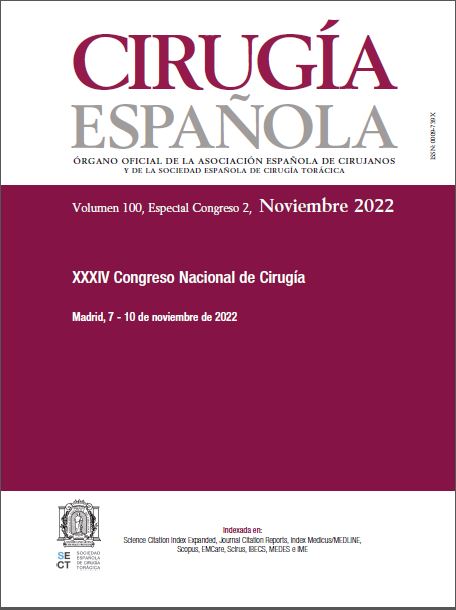P-662 - HEPATIC RUPTURE FOLLOWING INTRAPARENCHYMAL HEMORRHAGE - CASE REPORT
Hospital de Cascais Dr. José de Almeida, Alcabideche.
Introduction: Liver injuries represent one of the most frequent intraabdominal life-threatening injuries. Most hepatic injuries are relatively minor and can be managed with nonoperative treatment. Operative intervention is needed in hemodynamic instable patients or in those who fail nonoperative management.
Case report: A 74-year-old man with previous history of hypertension is brought to the emergency department after a syncope resulting in a fall with head and right hemithorax trauma. At admission disoriented, pale, hypotensive and tachycardic. The abdominal CT showed a large hemoperitoneum with recent hematic content, an extensive right liver laceration, with a depth of 90 m, and a serpiginous vascular structure corresponding to an arteriovenous fistula; also several right rib fractures. It was assumed a hemorrhagic shock caused by a rupture of an arteriovenous fistula. The patient went to the Operating Room, where it was found a large hemoperitoneum and rupture of the hepatic capsule on the inferior side of the right liver with active hemorrhage. Surgeons decided to ligate the right hepatic artery with hemorrhage control. After surgery, the vital signs got better but the patient still needed ICU support. After 4 days, the transaminases started to decrease and after 7 days they were almost normalized. Control CT on the seventh postoperative day showed no hemoperitoneum. After a few days the patient developed a ventilator-associated pneumonia and evoluted to septic shock with multiorgan disfunction an died after 25 days.
Discussion: Selective hepatic artery ligation can be used to manage hepatic bleeding limited to one lobe of the liver and may be useful when the Pringle maneuver controls the majority of bleeding. If portal venous flow to the liver is intact, the development of significant hepatic ischemia is unlikely. Mortality rates for patients with high-grade injuries requiring surgical management are significantly high (30 to 68 percent).








